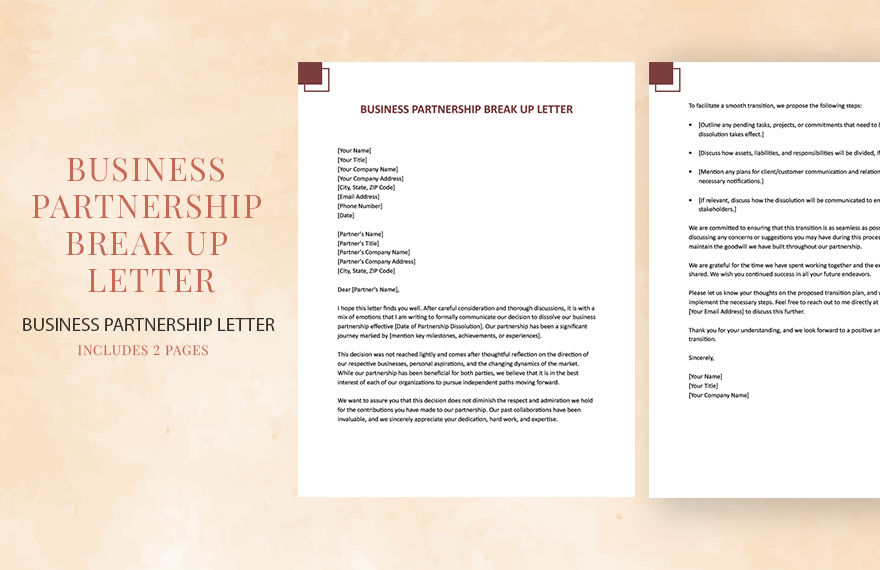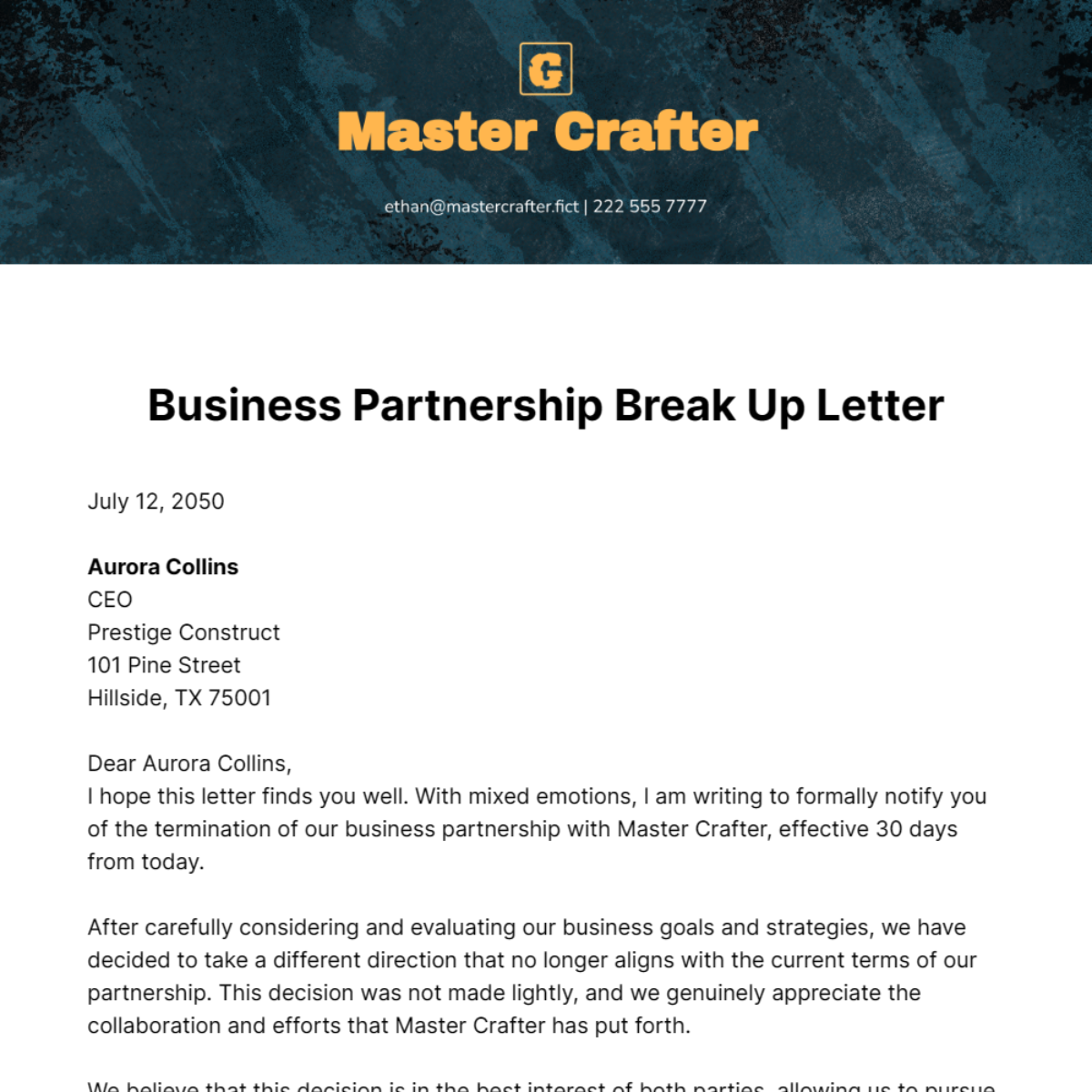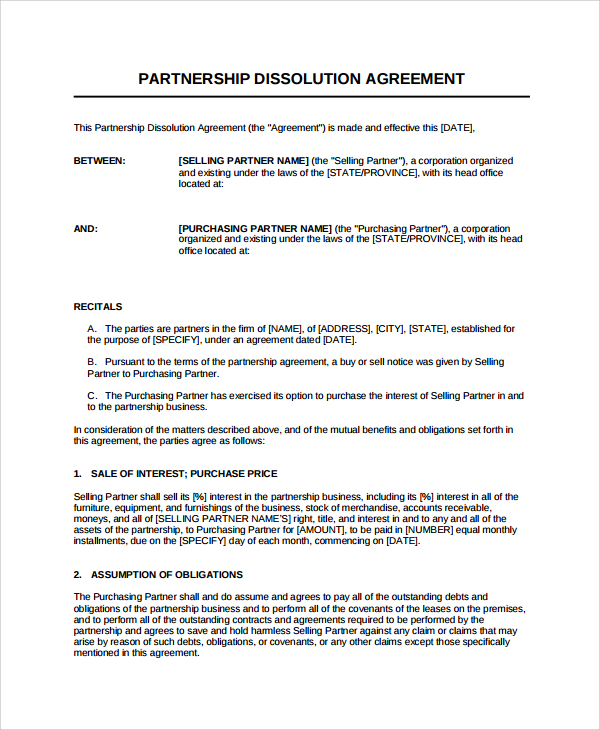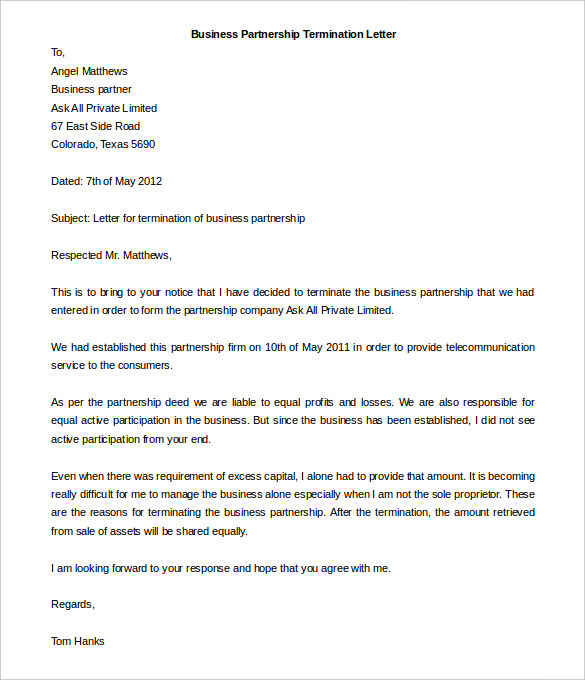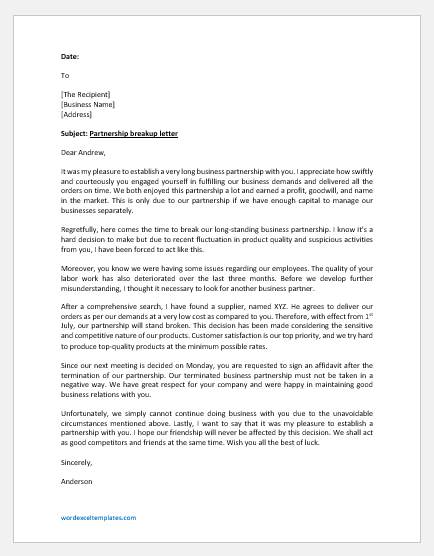How To Break Up A Business Partnership

Business partnerships, often forged in optimism and shared vision, can sometimes sour, leading to the complex and often emotionally charged process of dissolution. Navigating this separation requires careful planning, legal guidance, and a commitment to minimizing disruption for all stakeholders.
This article explores the essential steps involved in breaking up a business partnership, providing a roadmap for entrepreneurs seeking a smooth and equitable exit.
The Importance of a Partnership Agreement
At the heart of any successful partnership dissolution lies a comprehensive partnership agreement. This document, ideally drafted during the partnership's formation, outlines the procedures for dissolution, including asset division, debt allocation, and dispute resolution mechanisms.
According to the Small Business Administration (SBA), a well-defined agreement can significantly reduce the potential for conflict and legal battles during a breakup.
Without a clear agreement, dissolving a partnership can become a protracted and expensive legal entanglement.
Key Steps in Dissolving a Business Partnership
1. Review the Partnership Agreement
The first step is a thorough review of the partnership agreement. This involves identifying the specific clauses related to dissolution, including notice requirements, valuation methods, and distribution protocols.
Pay close attention to any sections that address the buy-out of a partner's share or the process for selling the business.
2. Notify Your Partner(s)
Once you've reviewed the agreement, formally notify your partner(s) of your intention to dissolve the partnership. This notification should be in writing and delivered via certified mail to ensure proof of delivery.
The notice should clearly state your intention to dissolve the partnership and propose a timeline for the process.
3. Determine the Value of the Business
Accurately determining the value of the business is crucial for fair asset distribution. This can be achieved through various methods, including independent appraisals, market analysis, or agreed-upon formulas outlined in the partnership agreement.
Discrepancies in valuation can lead to disputes, so it's essential to engage a qualified appraiser to provide an unbiased assessment. Many opt for a Certified Valuation Analyst (CVA) for objective insight.
4. Divide Assets and Liabilities
Based on the valuation and the partnership agreement, divide the assets and liabilities of the business. This may involve selling assets, transferring ownership, or assuming debt.
Ensure that all transfers of ownership and debt are properly documented and legally binding. Legal assistance might be needed in this step.
5. Address Legal and Regulatory Requirements
Dissolving a partnership involves several legal and regulatory requirements, including filing articles of dissolution with the relevant state authorities and notifying creditors, customers, and suppliers.
You also need to settle any outstanding tax obligations and close any business bank accounts.
6. Resolve Disputes
Despite best efforts, disputes may arise during the dissolution process. Consider using mediation or arbitration to resolve disagreements amicably and avoid costly litigation.
According to the American Arbitration Association, these methods can provide a more efficient and cost-effective alternative to traditional court proceedings.
The Human Element
Beyond the legal and financial considerations, dissolving a partnership can be emotionally challenging. Communication is key to minimizing conflict and preserving professional relationships.
Even if the split is amicable, acknowledge the emotional impact on all parties involved. Consider seeking guidance from a therapist or counselor to navigate the emotional complexities of the separation.
"Maintaining open and honest communication throughout the dissolution process is crucial for minimizing conflict and achieving a fair outcome," advises Sarah Jones, a business attorney specializing in partnership disputes.
Conclusion
Breaking up a business partnership is a complex undertaking that requires careful planning, legal guidance, and a commitment to fairness. By following these steps and prioritizing open communication, entrepreneurs can navigate the dissolution process smoothly and minimize disruption to their personal and professional lives.
Remember that a well-drafted partnership agreement and a proactive approach to dispute resolution can save time, money, and emotional distress in the long run.

